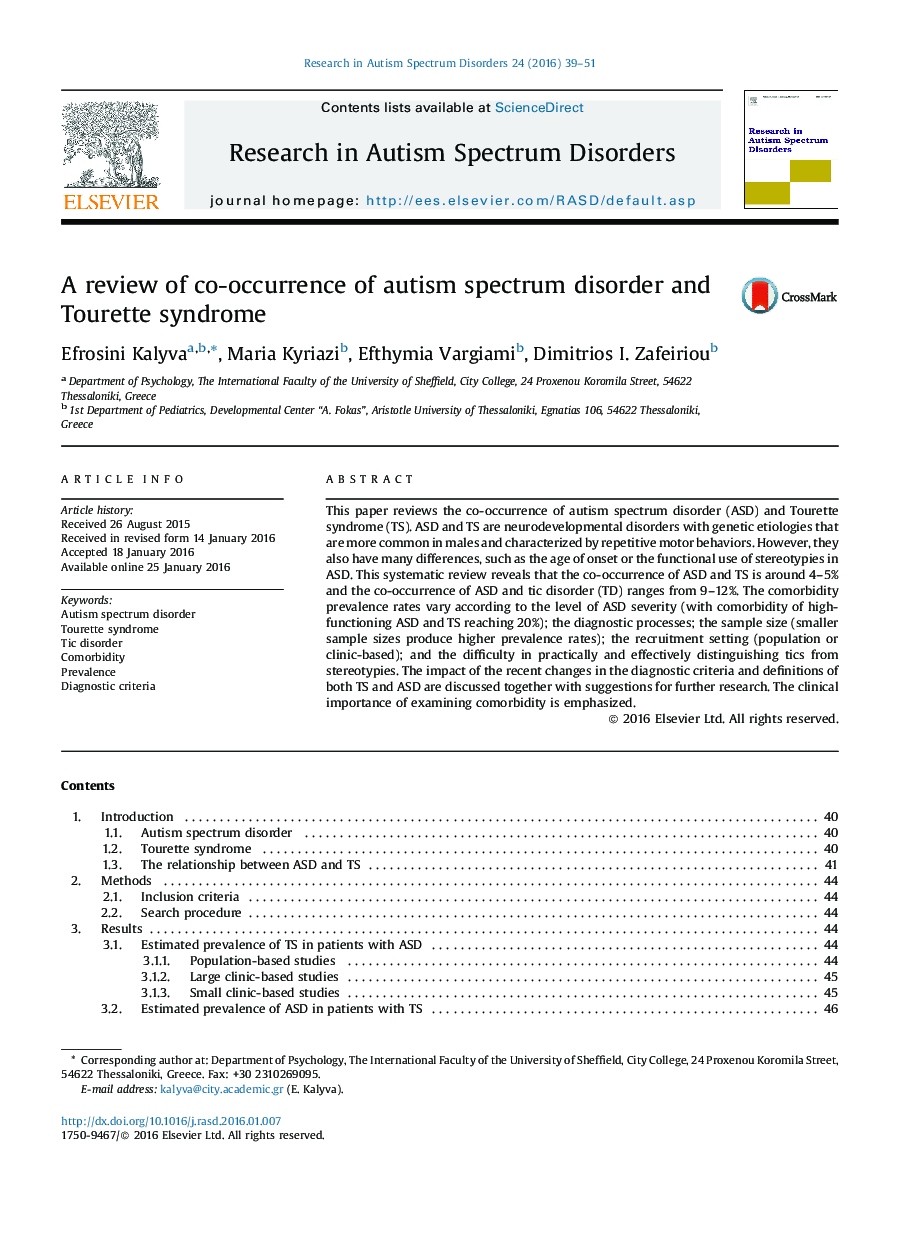| کد مقاله | کد نشریه | سال انتشار | مقاله انگلیسی | نسخه تمام متن |
|---|---|---|---|---|
| 369915 | 621825 | 2016 | 13 صفحه PDF | دانلود رایگان |
• The comorbidities are: ASD/TS 4–5%, ASD/TD 9–12%, and AS/TS 20%.
• ASD severity, proper diagnosis, sample size, and recruitment affect comorbidity.
• There are many differences and similarities in the clinical phenotype of ASD and TS.
• Differential diagnosis is essential for clinical management and intervention.
• The distinction between tics and stereotypies hinders clinical practice.
This paper reviews the co-occurrence of autism spectrum disorder (ASD) and Tourette syndrome (TS). ASD and TS are neurodevelopmental disorders with genetic etiologies that are more common in males and characterized by repetitive motor behaviors. However, they also have many differences, such as the age of onset or the functional use of stereotypies in ASD. This systematic review reveals that the co-occurrence of ASD and TS is around 4–5% and the co-occurrence of ASD and tic disorder (TD) ranges from 9–12%. The comorbidity prevalence rates vary according to the level of ASD severity (with comorbidity of high-functioning ASD and TS reaching 20%); the diagnostic processes; the sample size (smaller sample sizes produce higher prevalence rates); the recruitment setting (population or clinic-based); and the difficulty in practically and effectively distinguishing tics from stereotypies. The impact of the recent changes in the diagnostic criteria and definitions of both TS and ASD are discussed together with suggestions for further research. The clinical importance of examining comorbidity is emphasized.
Journal: Research in Autism Spectrum Disorders - Volume 24, April 2016, Pages 39–51
